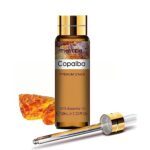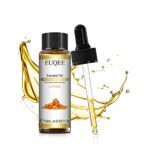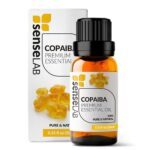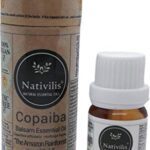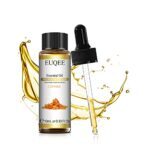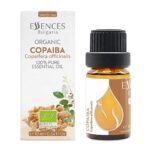What is Copaiba used for?
Copaiba has a rich history of traditional use for various medicinal purposes. It's primarily known for its anti-inflammatory and analgesic properties, making it a popular natural remedy for pain relief and inflammation reduction. Additionally, copaiba is often used in skincare products for its potential to soothe skin irritations and promote overall skin health. Some people also use copaiba for respiratory issues, digestive problems, and to support overall wellness. Its versatility and purported therapeutic benefits have led to its inclusion in a wide range of products, including essential oils, topical creams, and dietary supplements.
Copaiba pronunciation
Copaiba is pronounced as "koh-pie-buh." This pronunciation may vary slightly depending on regional accents and languages, but generally follows this phonetic pronunciation. Getting the pronunciation right can help improve communication and understanding when discussing copaiba and its uses.
Copaiba oil vs marijuana
While both copaiba oil and marijuana have been associated with potential therapeutic effects, they are distinct substances with different compositions and effects. Copaiba oil is derived from the resin of copaiba trees and contains high levels of beta-caryophyllene, which interacts with the body's endocannabinoid system to provide anti-inflammatory and pain-relieving effects. On the other hand, marijuana contains psychoactive compounds such as THC and CBD, which also interact with the endocannabinoid system but produce additional psychoactive effects. Copaiba oil does not contain THC and does not cause psychoactive effects like marijuana.
Copaiba for pain and inflammation
Copaiba's anti-inflammatory and analgesic properties make it a popular choice for managing pain and inflammation. Whether used topically or ingested, copaiba oil has been traditionally used to alleviate various types of pain, including joint pain, muscle soreness, and arthritis. Its ability to reduce inflammation may also benefit individuals with inflammatory conditions like rheumatoid arthritis or inflammatory bowel disease.
-

ASAKUKI Peppermint Essential Oil 100ml, 100% Pure Natural Essential Oils, Organic Aromatherapy Essential Oil, Scented Oils for Diffuser, Humidifier, Relax, Sleep, Perfect Gifts
Buy product -

Kanzy Rosehip Oil for Face 120ml Organic Cold Pressed 100% Pure Natural, Hydrating, Nourishing & Moisturising Rosehip Seed Oil for Skin, Hair, Nails, and Body
Buy product -
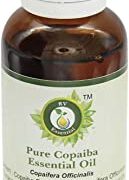
Copaiba Essential Oil | Copaifera Officinalis | For Skin | 100% Pure Natural | Steam Distilled | Therapeutic Grade | 15ml | 0.507oz By R V Essential
Buy product -
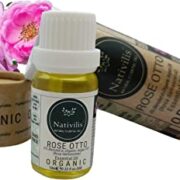
Nativilis Organic Rose Otto Essential Oil Blend 5% (Rosa damascena/Argania spinosa) – 100% Natural – 10ml – (GC/MS Tested) – blends very well with Copaiba Oil
Buy product
Is copaiba good for pain?
Yes, copaiba is often regarded as effective for managing pain, thanks to its anti-inflammatory and analgesic properties. Many people find relief from joint pain, muscle soreness, and other forms of discomfort by using copaiba oil topically or internally. Its natural approach to pain relief has made it a popular alternative to conventional medications for individuals seeking natural remedies for pain management.
Copaiba oil benefits anxiety
Copaiba oil is believed to possess calming properties that may help alleviate symptoms of anxiety and stress. Its soothing aroma and potential anti-inflammatory effects may contribute to a sense of relaxation and well-being. Some individuals use copaiba oil in aromatherapy or topically to promote relaxation and reduce anxiety symptoms. While scientific evidence supporting its specific benefits for anxiety is limited, many people find it helpful for promoting overall relaxation and emotional balance.
Copaiba side effects
While copaiba oil is generally considered safe for topical and aromatic use, some individuals may experience side effects such as skin irritation or allergic reactions. Ingesting copaiba oil internally is not recommended without consulting a healthcare professional, as it may cause digestive issues or interact with medications. Pregnant or breastfeeding women should exercise caution and seek medical advice before using copaiba oil.
Balsam Copaiba side effects
Side effects associated with balsam copaiba, a resinous substance extracted from copaiba trees, are similar to those of copaiba oil. These may include skin irritation, allergic reactions, or digestive issues. It's essential to use balsam copaiba products cautiously and discontinue use if any adverse reactions occur. Consulting with a healthcare professional before use is advisable, especially for individuals with underlying medical conditions or those taking medications.
What is Copaiba essential oil used for?
Copaiba essential oil is used for a variety of purposes, including pain relief, inflammation reduction, skin care, respiratory support, and emotional well-being. Its versatility makes it a popular choice for aromatherapy, massage therapy, and topical application. Copaiba essential oil can be incorporated into skincare routines to soothe skin irritations, promote a clear complexion, and support overall skin health. Additionally, its calming aroma may help reduce stress, anxiety, and promote relaxation when diffused or applied topically.
Is copaiba same as CBD oil?
Copaiba oil and CBD oil are distinct substances with different compositions and effects. While both interact with the body's endocannabinoid system, they contain different compounds. Copaiba oil contains high levels of beta-caryophyllene, which interacts with cannabinoid receptors to provide anti-inflammatory and analgesic effects. CBD oil, on the other hand, contains cannabidiol (CBD), a compound derived from hemp or marijuana plants. While both oils have potential therapeutic benefits, they operate through different mechanisms and may produce different effects.
What are the side effects of copaiba?
Side effects of copaiba may include skin irritation, allergic reactions, digestive issues, or interactions with medications when ingested internally. It's essential to use copaiba products cautiously and discontinue use if any adverse reactions occur. Pregnant or breastfeeding women should consult with a healthcare professional before using copaiba oil or other copaiba products. It's also advisable to perform a patch test before applying copaiba oil topically to check for any sensitivity or allergic reactions.
What does copaiba smell like?
Copaiba oil has a warm, woody aroma with subtle sweet undertones. Its scent is often described as earthy, resinous, and slightly balsamic. Some individuals also detect hints of honey or vanilla in copaiba's aroma. The scent of copaiba oil can vary slightly depending on factors such as its source, processing method, and concentration. Overall, its pleasant aroma makes it a popular choice for aromatherapy and natural perfumery.

